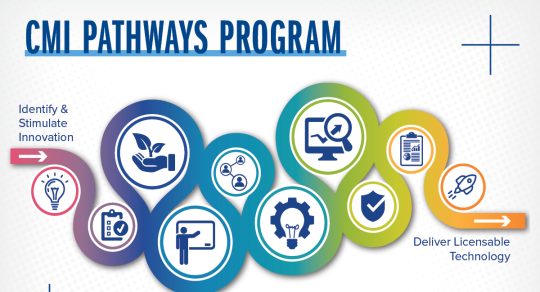Fellowship
Neuroradiology
The Neuroradiology Fellowship at Penn State Health Milton S. Hershey Medical Center is a one-year, ACGME-accredited program that admits one fellow per year.
Explore More
The Neuroradiology Fellowship provides training in the performance and interpretation of all aspects of neuroradiology, including magnetic resonance imaging, computed tomography, myelography and head and neck radiology. The fellowship also provides training in advanced CNS imaging, including MR spectroscopy, perfusion MRI, diffusion tensor MRI and CT perfusion and angiography.
As part of Penn State Spine Center, the fellowship offers extensive hands-on training in spine procedures such as vertebral augmentation, radiofrequency ablation, sacroplasty, epidural and facet injections, disc-related procedures and biopsies.
The fellowship is centered at Penn State Health Milton S. Hershey Medical Center and Penn State Children’s Hospital, which is adjacent to the medical center. This is the tertiary-care center for the central Pennsylvania area.
There are seven full-time ABR- and CAQ-certified neuroradiologists on staff. Fellows are supervised by staff neuroradiologists and are responsible for the performance and interpretation of all examinations under the supervision of staff neuroradiologists.

Program Overview
A multidisciplinary approach to neuroradiology training is emphasized. There is a close relationship of the clinical and academic activities of the Division of Neuroradiology with the Department of Neurology, Department of Otolaryngology – Head and Neck Surgery, Department of Neurosurgery, Division of Neuropathology, Department of Orthopaedics, Division of Pain Management and Department of Physical Medicine and Rehabilitation.
The department is entirely electronic with an excellent picture archiving and communication system as well as speech-recognition software.
Annually, the Division of Neuroradiology performs about 26,000 neuro CTs, 24,000 neuro MRIs and 1,400 neurovascular procedures.
Learn More about the Fellowship
All applications must be submitted through ERAS, and the program participates in the National Residency Matching Program. Applications will not be received outside of ERAS, and positions will not be filled outside the match.
The program will start reviewing applications in ERAS Dec. 1.
The American Society of Neuroradiology provides resources on the ERAS application process here.
Leadership

Program Coordinator, Diagnostic Radiology Residency, Neuroradiology Fellowship and Nuclear Medicine Fellowship, Radiology
Supporting Your Training
Curriculum Details
Diagnostic Neuroradiology
The Diagnostic Neuroradiology rotation encompasses general neuroradiology, brain, spine and head and neck imaging. This rotation provides exposure to the full gamut of neuroradiology studies, including CT, MRI, non-invasive CT and MR angiography, CT and MR perfusion studies, MR spectroscopy and myelography.
Interventional Spine
The Interventional Spine rotation (one day a week) provides hands-on experience with both diagnostic and therapeutic spine procedures such as discograms, cervical and lumbar nerve root blocks, epidural steroid injections, facet blocks, lumbar drainage catheter placements, drainages and vertebral augmentations. Extensive experience in a wide range of CT-guided biopsies of the spine, intervertebral discs and paraspinal structures are also provided.
Neuroangiography
Neuroradiology fellows have the option to take part in diagnostic cerebral angiography, acute stroke care, carotid stenting, aneurysm coiling, vascular malformation treatment and tumor embolization procedures. Fellows also participate in the structured vascular and neuroangiography online curriculum sponsored by the ASNR.
Pediatric Neuroradiology
Fellows will spend one day per week doing dedicated Pediatric Neuroradiology and are exposed to a variety of pediatric pathologies.
Required Diagnostic Examinations Interpreted
Total diagnostic examinations interpreted: 3000 (Of which at least 1500 should be MR imaging).
Vascular imaging interpretation: 250 (Including CTA, CTV, MRA, MRV, Doppler sonography, and catheter-based angiography).
Interventional
The fellowship provides hands-on experience with both diagnostic and therapeutic spine procedures such as epidural steroid injections, facet blocks, spine drainages and vertebral augmentations. Extensive experience in a wide range of CT-guided biopsies of the spine, intervertebral discs and paraspinal structures are also provided. Neuroradiology fellows are encouraged but not required to take part in diagnostic cerebral angiography, acute stroke care, aneurysm coiling and other neuro-interventional procedures.
Required Procedures
Image-guided invasive procedures performed: 100(Which may include LP, myelography, advanced spine procedures, catheter-based angiography, and head and neck biopsies).
Neuroradiology fellows take weeklong call on average one out of every five weeks during the year, consisting of in-house duty from 5 to 10 p.m. weekdays and either in-house or at-home duty on Saturdays and Sundays. After-hours call for emergent procedures is covered by pager from home.
Potential responsibilities on pager call include emergent lumbar punctures, myelograms and triage/performance of spinal interventional procedures. Fellows are provided with workstation at home and VPN access to enable workflow from home similar to that in-house.
Fellows are encouraged to present at neuroradiology societal meetings such as the ASNR annual meeting, ASHNR, ASSR or ASFNR. Past fellows have also presented work at RSNA and ARRS. Fellows are given approximately one-half an academic day per week to pursue scholarly activities.
In addition to the benefits provided to all Penn State Health Milton S. Hershey Medical Center employees, fellows are provided an educational funding allotment during the 12-month fellowship for expenses such as meeting attendance, travel expenses, electronic education materials and e-readers, etc. Read more about fellow benefits here.
Tuesdays
8 a.m.: Interesting case conference
Wednesdays
7:30 a.m.: Dedicated fellow didactic conference
4 p.m.: Head and neck tumor board
Thursdays
8 a.m.: Rotates between multidisciplinary pediatric neuro conference, journal club, head and neck case conference, and pediatric interesting case conference
Fridays
7 a.m.: Alternates between CNS tumor board and multidisciplinary spine conference
8 a.m.: Multidisciplinary neurosciences conference
Nine clinical MRIs (Four 1.5T Siemens and five 3T Siemens)
One research MRI (3T Siemens)
Eight MDCTs
Dedicated CT scanner in emergency department (Siemens 128 detector dual energy)
CT fluoroscopy suite
Flat panel biplane Siemens Artis Angiogram equipment with DynaCT and rotational DSA capabilities
PET/CT scanner (Phillips Gemini 16 slice)
Phillips PACS with Powerscribe 360 Speech Recognition system
Siemens and TeraRecon 3D reconstruction software with dedicated 3D lab with 3D printing capability
Cases seen in the program have included:
Gadolinium-induced encephalopathy
Balos concentric sclerosis
Spinal cord sarcoidosis
Abducens schwannoma
Spinal cord hemangioendothelioma
Variant CJD
Amyotrophic lateral sclerosis
Superior semicircular canal dehiscence
Intergluteal dorsal dermal sinus
Phalen McDermid syndrome
Arboviral encephalitis
S-adenosyltransferase deficiency
MELAS




